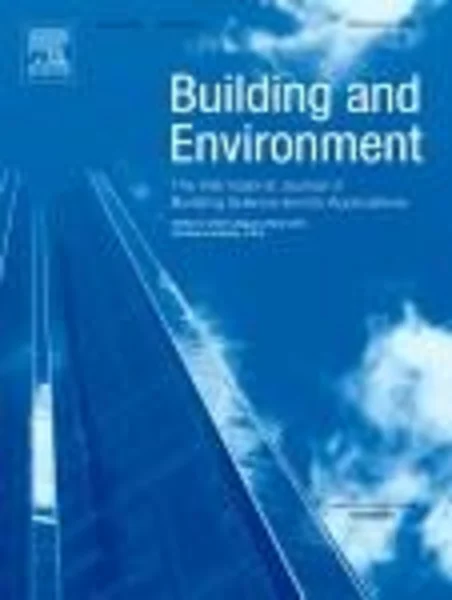-
a comparison of three turbulence models for the prediction of parallel lobed jets in perforated panel optimization
جزئیات بیشتر مقاله- تاریخ ارائه: 1390/01/01
- تاریخ انتشار در تی پی بین: 1390/01/01
- تعداد بازدید: 642
- تعداد پرسش و پاسخ ها: 0
- شماره تماس دبیرخانه رویداد: -
the general context of the present study is the design of high induction hvac air diffusers by means of passive jet control. when the diffuser is a perforated panel with lobed orifices (meslem et al. 2010), the optimization of jet induction consists in improving the orifice’s geometry, the spacing between orifices and their arrangement on the panel. in this study, the flow field of a turbulent twin cross-shaped jet is investigated numerically using the standard k-ε model, the shear stress transport (sst) k-ω model and the reynolds stress model (rsm). the results are compared with piv measurements. the objective is to assess their capability and limitations to predict the significant features of twin jet flow when the flow is numerically resolved through a lobed diffuser. it is shown that the k-ε and rsm models are more appropriate for predicting potential jet core length, the change in jet centreline streamwise velocity, and flow expansion in the symmetry plane of the twin jet flow. however, these models overestimate the overall flow expansion and the jet volumetric flow rate. the sst k-ω model seems more appropriate for the prediction of such dynamic integral quantities. a high level of turbulent kinetic energy predicted by the k-ε and rsm models in the near field of jets is probably the reason for this overestimation of jet induction. the sst k-ω model would appear to be the most appropriate tool for optimizing orifice design, orifice to orifice spacing and relative orifice orientation on a perforated panel diffuser.
مقالات جدیدترین رویدادها
-
استفاده از تحلیل اهمیت-عملکرد در ارائه الگوی مدیریت خلاقیت سازمانی و ارائه راهکار جهت بهبود
-
بررسی تاثیر ارزش وجوه نقد مازاد بر ساختار سرمایه شرکت های پذیرفته شده در بورس اوراق بهادار تهران
-
بررسی تأثیر سطح افشای ریسک بر قرارداد بدهی شرکت های پذیرفته شده در بورس اوراق بهادار تهران
-
بررسی تأثیر رتبه بندی اعتباری مبتنی بر مدل امتیاز بازار نوظهور بر نقد شوندگی سهام با تأکید بر خصوصی سازی شرکت ها
-
تأثیر آمیخته بازاریابی پوشاک ایرانی بر تصویر ذهنی مشتری پوشاک ایرانی (هاکوپیان)
-
تحلیل و آنالیز نحوه تشخیص آسیب در پل های یکپارچه با استفاده از پارامترهای مودال
-
بررسی شیوع تومور کارسینوئید آپاندیس در بیماران آپاندکتومی شده در بیمارستان فاطمی اردبیل
-
بررسی نقش توریسم در توسعه پایدار (مطالعه موردی شهرستان فریدونشهر با استفاده از مدل تحلیلی swot)
-
بررسی سنت تدفین پادشاهان ایران براساس متون ادبی و پارچه های تدفینی قرون اولیه هجری
-
experimental research on heat transfer of water in tubes with conical ring inserts in transient regime
مقالات جدیدترین ژورنال ها
-
مدیریت و بررسی افسردگی دانش آموزان دختر مقطع متوسطه دوم در دروان کرونا در شهرستان دزفول
-
مدیریت و بررسی خرد سیاسی در اندیشه ی فردوسی در ادب ایران
-
واکاوی و مدیریت توصیفی قلمدان(جاکلیدی)ضریح در موزه آستان قدس رضوی
-
بررسی تاثیر خلاقیت، دانش و انگیزه کارکنان بر پیشنهادات نوآورانه کارکنان ( مورد مطالعه: هتل های 3 و 4 ستاره استان کرمان)
-
بررسی تاثیر کیفیت سیستم های اطلاعاتی بر تصمیم گیری موفق در شرکتهای تولیدی استان اصفهان (مورد مطالعه: مدیران شرکتهای تولیدی استان اصفهان)
-
بررسی حقوقی کارت های اعتباری و عناصر تشکیل دهنده آن بر مبنای عقد مرابحه و دیگر عقود در نظام بانکی و اقتصادی کشور
-
تاثیر توانایی مدیریت بر عملکرد شرکت با تاکید بر نقش فرصت های رشد
-
تحلیل چرخش رژیم بازده بازار سهام در ایران: مقایسه بین المللی
-
راهبرد سیاسی ایران در حل مساله قره باغ با تاکید بر تامین منافع ملی
-
non-linear dynamics of size, capital structure and profitability in threshold panel regression framework in tse




سوال خود را در مورد این مقاله مطرح نمایید :